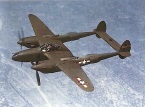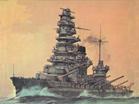Thayne
Posts: 748
Joined: 6/14/2004
Status: offline

|
THE THAYNE REPORTS: THE ADMIRALS' EDITION
January 13, 1942 - Japanese Attack East Borneo
The Thayne Reports are published by allied intelligence and distributed to senior officers serving in the Pacific Theater of Operation in order to give these officers an understanding of the overall military situation. These top secret reports contain the best and most up-to-date information available at the time of their writing. Revealing any of the contents of these reports will be punished as treason.
Subs Escape Japanese Invasion at Balikpapan
(Soerabaja - Dutch East Indies) The alarm went out, "Get out of here! Japanese ships coming in!" went out over the radio.
A Japanese invasion fleet was approaching Balikpapan.
Lieutenant Commander William G. Chappel ordered the fuel lines cut, had a few last boxes of food and ammunition thrown into the submarine, and ordered the ship to prepare to make way.
He had brought his submarine here from orders to "fill her up while you still can." Chappel in SS-38 had been patrolling the Makassar Straight for the last month and was running short of food, fuel, and other supplies. He had failed to get a shot off against the Japanese carrier fleet when it sailed through, but stayed on station to intercept any other Japanese attempt to infiltrate the Java Sea.
Now, the Japanese were coming.
His crew fired up the engines, and SS-38 pulled away from the dock. But the channel to the ocean was only fourty feet deep. It was too shallow to submerge until they got into the deeper water off the coast.
SS-36 was ahead of him. Through his binoculars, Chappel saw the submarine dive and mentally marked how far he would have to go to get into safe water. He calculated the time needed as at least five more minutes.
He could not make a direct run for the open ocean. Balikpapan Harbor had been mined. He had a zig-zag course to run under the direction of a Harbor pilot who had jumped onto the submarine as they left.
Then, Chappel saw the ships.
"Take her down!" Chappel shouted. "Clear the bridge"
"It's only thirty feet deep!" shouted Lieutenant Lopez.
"Lower our profile a bit, Lieutenant. At least we'll be harder to see."
"It doesn't work that way, Captain!" Lopez answered. "There are rocks and . . . "
"Up here, there are ships, Lieutenant, who mean to do us harm. I'll take my chances with the rocks."
The submarine settled into the water just a few feet. As it did so, it lost speed to match. As it lost speed it would take longer to reach deeper waters.
"Radio back. Tell that Dutch sub to leave NOW!"
He paused while his order was carried out, then said, "Distance to the shelf?"
"One point four miles, sir." Lopez answered.
"All ahead full. Watch the depth."
"Thirty-seven feet, sir."
At this point, he was heading almost straight for the Japanese ships, which were coming in. It was like playing chicken. He was almost certain that the Japanese ships could see him by now. Hopefully, they could not yet tell SS-38 from dozens of private ships that littered the harbor - some of them also trying to escape.
"Depth, Mr. Dawson."
"Almost Forty feet."
Lieutenant Lopez said, "We should bottom out. Let them go by."
"They'll see us," Chappel answered. He closed his eyes for a moment and tried to block out all sounds and other distractions. "Take her down, thirty feet, all ahead full."
At the depth the water was above the deck, but the conning tower still rode above the surface. They were, perhaps, the equivalent of a fast-moving tug boat.
"Fifty feet. Sixty feet, sir, we've cleared the shelf."
"Clear the bridge. Take her down."
The submarine sank into the water.
After waiting until the sub was totally submerged, Chappel said, "Thirty degrees right, all ahead half." He was hoping to prevent the Japanese from being able to plot his course after they watched him submerge.
They could hear the propellers of the enemy ships through the hull and sat, nervously and quiet, trying to escape notice. They heard no active sonar.
After a minute, he ordered, "All stop. Periscope depth."
Through the periscope he saw the line of Japanese ships moving towards the harbor.
"Bring us around 180 degrees," he ordered. "All ahead slow. Down periscope. Load the torpedoes."
He stood, impatiently, while the submarine turned completely around. SS-38 only had torpedoes facing forward, so he could not fire behind him.
"Course, 325." Lieutenant Lopez said.
"All stop," ordered Chappel.
"Up periscope."
Looking through the periscope, he found a ship. "We have a troop transport. Range, 3000 feet. Speed, 8 knots. Course, 290."
This information was used to plot an intercept course for the torpedoes. They would be firing at the ship at a fairly steep angle. It meant that they were not going to lead the enemy ship by much, but that it would be easy to get a glancing blow off the side.
"Course plotted and laid in, sir," Lopez informed him.
"Fire torpedoes."
"Torpedoes away."
Chappel watched while the seconds were counted down to impact.
"Hit!" reported Captain Chappel. The crew cheered at his news. "Two hits!"
A couple of seconds later, the sounds from the explosions rumbled through the submarine confirming the Captain's report.
"Down periscope. Get us out of here, Lieutenant Lopez. The Japanese aren't going to be too happy with us."
America Load More Reinforcements at San Diego
(San Diego) San Diego harbor has become a beehive of activity as the American military prepares to send another wave of reinforcements out into the South Pacific.
Cargo ships and troop carriers have been arriving all week from Australia and New Zealand. They had assembled at the collection point set up about 800 miles southwest of San Diego and brought through the submarine-infested waters off of the American coast by anti-submarine escorts.
For the last three days they had been loading up troops, equipment ammunition, food, fuel, and other supplies.
This next set of landings includes the 1st Marine Raider Battalion for the island of Savaii, along with artillery, anti-aircraft batteries, and engineers. Savaii is located in the Samoa islands near Pago Pago, near where Enterprise was recently struck by a Japanese torpedo. Reinforcing the island would add one more base to the mutually supporting nest of air of naval bases that the allies were trying to establish at Samoa and Fiji.
The forces heading out into the South Pacific also include a Port Service unit for Suva in the Fiji Islands. These soldiers would help to maintain the air and naval units seeking to use Suva as a base.
The unit with the longest journey ahead of it is the 32nd Aviation Base Force. They were loading up on the troop transport Monterey, a converted cruise ship capable of moving at a cruising speed of 18 knots. This was done to speed up the trip and get the soldiers to their destination as quickly as possible.
That destination was Karachi, India. From there, the soldiers will board a train that will take them to Ledo in northeastern India. Once in Ledo, they will board transport airplanes that will take them over the mountains into western China. Once in China, they will take the place of the American Volunteer Group in servicing American military planes used on the Chinese side of the China Offensive.
In addition, cargo ships and tankers are being loaded up with all measure of aviation fuel, ship fuel, ammunition, medical supplies, food, construction equipment, and clothing for the bases that are already established. Approximately 2 dozen cargo ships will be heading out to 2 dozen different ports to deliver their precious cargo.
It remains to be seen how many will actually make it to their destinations.
For the first part of their trip, they will form up into a large convoy. Protected by a screen of anti-submarine warships and moving only as fast as the slowest ship, they will sail out to the Pacific Assembly Area. There, they will split up into individual ships and small task forces. Meanwhile, the anti-submarine ships will pick up a new set of transport and cargo ships gathering in the Pacific Assembly Area and prepare to bring them to San Diego.
Battleships Make Way for San Francisco
(Pearl Harbor - Hawaii) Three of the battleships stricken during the Pearl Harbor attack prepared themselves today for the long trip to San Francisco, where they can be repaired and prepared to return to the war. They were told to leave shortly after dark. To most of the people in Hawaii, the ships will be in the harbor one day and gone the next. Their date of departure and their destination were all secrets.
The three battleships making the trip are Tennessee, California, and Nevada.
They are being accompanied by a squadron of destroyers that will have their own turn in the repair yards. These destroyers will be fitted with the newest radar, allowing them to better track Japanese airplanes and Japanese ships.
The three remaining battleship casualties of the Japanese attack - Pennsylvania, West Virginia, and Maryland - are still too badly damaged to risk on the open oceans.
Work on at least one of these ships will stop when Enterprise arrives. Enterprise[/iu] will get the full attention of as many repair crews as it takes to get the ship repaired and restore it to the battle lines.

 Attachment (1) Attachment (1)
< Message edited by Thayne -- 6/20/2010 6:23:53 PM >
|
 Printable Version
Printable Version































 New Messages
New Messages No New Messages
No New Messages Hot Topic w/ New Messages
Hot Topic w/ New Messages Hot Topic w/o New Messages
Hot Topic w/o New Messages Locked w/ New Messages
Locked w/ New Messages Locked w/o New Messages
Locked w/o New Messages Post New Thread
Post New Thread